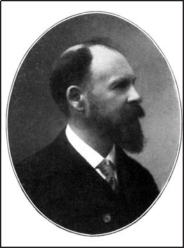- WATSON
- UNITED KINGDOM (see also List of Individuals)\
 7.3.1860 Dundee/UK - 23.11.1946 Birmingham/UK\John Duncan Watson was educated at the High School of Dundee and then served a pupilage as a civil engineer with his father, who at the time was waterworks engineer in Bradford. In 1884 Watson was appointed burgh surveyor of Arbroath where he was responsible during the next six years for the city water supply. In 1890 he took over as Aberdeen county engineer for the following nine years, where he designed and constructed water and drainage schemes. He came in 1899 to Birmingham as the engineer of the Tame and Rea District and where he became acquainted with the study of sewage purification. In Birmingham, he was responsible for the sewage disposal works including the sludge removal plant. He therefore became one of the pioneers of the first large percolation filter plants in the world, which later developed in the activated sewage treatment.\Watson's pioneering additions to the Birmingham sewage disposal works introduced biological methods in place of land filtration, thereby converting six miles of sewage lagoons in the Tame Valley into fertile meadows. In parallel, Watson acted as temporary Engineering Inspector for the Local Government Board of Scotland. He was a Member of the Institution of Civil Engineers and its president in the term 1935-36; he authored the 1912 book on the biological treatment of wastewater and later added also to hydropower engineering as applied to wastewater treatment and urban applications. He was an Honorary Fellow and Past-President of the Institution of Sanitary Engineers.\Anonymous (1946). John Duncan Watson. The Engineer 182: 495-496. PHorner, R.W. (1987). The Institution of Public Health Engineers: A historical review. Public Health Engineer 14(4): 7-15. PPike, W.T. (1908). John Duncan Watson. British engineers and allied professions: 399. Pike: Brighton. PWatson, J.D. (1907). Sewage-disposal by biological processes. Trans. Waterworks, Sewerage and Gasworks Conference London Conference Section VI: 89-93.Watson, J.D. (1910). Birmingham sewage-disposal works. Minutes Institution of Civil Engineers 181: 259-316.Watson, J.D. (1912). The works of the Birmingham Tame and Rea District Drainage Board and method of sewage treatment. Jones: Birmingham.Watson, J.D. (1937). Modern hydraulic turbines. The Engineer 163: 474-478; 163: 498-501;163: 526-529; 163: 586-589.
7.3.1860 Dundee/UK - 23.11.1946 Birmingham/UK\John Duncan Watson was educated at the High School of Dundee and then served a pupilage as a civil engineer with his father, who at the time was waterworks engineer in Bradford. In 1884 Watson was appointed burgh surveyor of Arbroath where he was responsible during the next six years for the city water supply. In 1890 he took over as Aberdeen county engineer for the following nine years, where he designed and constructed water and drainage schemes. He came in 1899 to Birmingham as the engineer of the Tame and Rea District and where he became acquainted with the study of sewage purification. In Birmingham, he was responsible for the sewage disposal works including the sludge removal plant. He therefore became one of the pioneers of the first large percolation filter plants in the world, which later developed in the activated sewage treatment.\Watson's pioneering additions to the Birmingham sewage disposal works introduced biological methods in place of land filtration, thereby converting six miles of sewage lagoons in the Tame Valley into fertile meadows. In parallel, Watson acted as temporary Engineering Inspector for the Local Government Board of Scotland. He was a Member of the Institution of Civil Engineers and its president in the term 1935-36; he authored the 1912 book on the biological treatment of wastewater and later added also to hydropower engineering as applied to wastewater treatment and urban applications. He was an Honorary Fellow and Past-President of the Institution of Sanitary Engineers.\Anonymous (1946). John Duncan Watson. The Engineer 182: 495-496. PHorner, R.W. (1987). The Institution of Public Health Engineers: A historical review. Public Health Engineer 14(4): 7-15. PPike, W.T. (1908). John Duncan Watson. British engineers and allied professions: 399. Pike: Brighton. PWatson, J.D. (1907). Sewage-disposal by biological processes. Trans. Waterworks, Sewerage and Gasworks Conference London Conference Section VI: 89-93.Watson, J.D. (1910). Birmingham sewage-disposal works. Minutes Institution of Civil Engineers 181: 259-316.Watson, J.D. (1912). The works of the Birmingham Tame and Rea District Drainage Board and method of sewage treatment. Jones: Birmingham.Watson, J.D. (1937). Modern hydraulic turbines. The Engineer 163: 474-478; 163: 498-501;163: 526-529; 163: 586-589.
Hydraulicians in Europe 1800-2000 . 2013.
